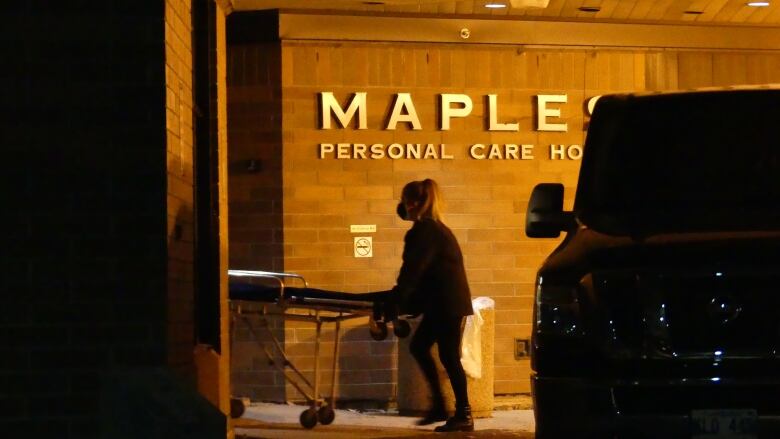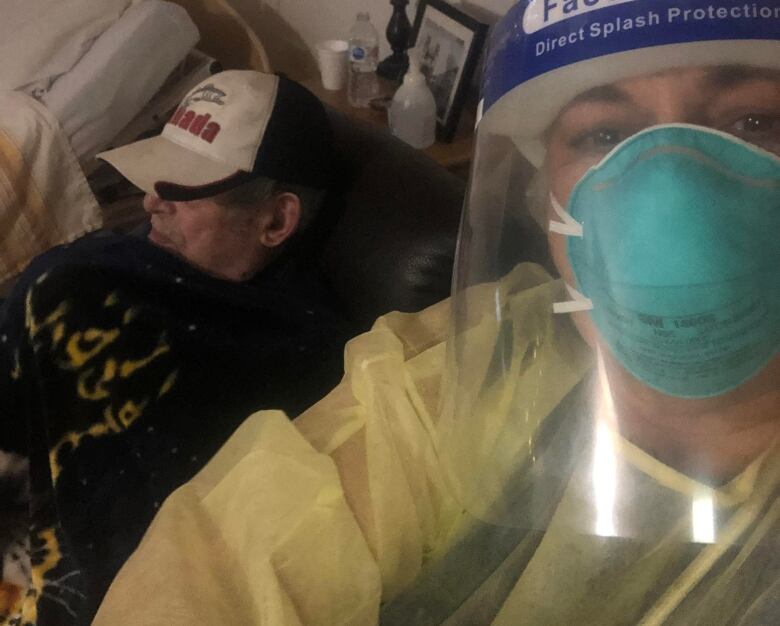Manitoba government won't commit to increase in daily care hours for care-home residents
Ontario moving to an average of 4 hours of daily care per resident by 2025; Manitoba standard is 3.6 hours

The Manitoba government will so far not commit to increasing the daily hours of care provided to personal care home residents, even though the Ontario government recently did so.
In November, Ontario's Progressive Conservative government announced it willincreasethe hours of direct care for each long-term care resident to an average of four hours per day.
Manitoba's standard for the number of daily hours of care for eachpersonal care home resident is3.6 hours. There have been calls to increase that to 4.1 hours for years,even before the COVID-19 pandemic.
"Pre-COVID, there was already what we consider a staffing crisis in long-term care. In the personal care homes, there wasn't enough staff," said Shannon McAteer, a health care co-ordinator with the Canadian Union of Public Employees in Manitoba,which represents about 5,600 workers at long-term care homes in the province.
"Then COVIDhit, and then we got into horrible crisis situations" at somepersonal care homes,McAteer said.
COVID-19 outbreaks at personal care homes in Manitoba have so far claimed the lives of 454 residents.

The daughter of a man who died in one of those outbreaks saysOntario is "making good steps" with its increased care hours.
"You know, in some cases 4.0 is not enough, but it's much better than 3.6," saidEddie Calisto-Tavares, whose father died after a COVID-19 outbreak at Winnipeg'sMaples Long TermCare Home in November.
Before his death, Calisto-Tavares was allowed to go into thehome to help care for him.
She says she heard residents' cries for help and no one responded because there wasn't enough staff to care for all the seniors.
Unions, associationcall for change to standards
Last June,the Canadian Union of Public Employees sent a letter toCameron Friesen, Manitoba's health minister at the time, requesting the standard be increased to 4.1 hours.
That's the level of staffing researchers have determined is the minimum required to avoid jeopardizing the health and safety of residents, CUPE said in its letter.
Other organizations, such as the Manitoba Nurses Unionand the Manitoba Association of Residential and Community Care Homes for the Elderly (MARCHE), have made similar recommendations.
The Manitoba government didn't commit to the change.
Then came Ontario's announcement last November that it would create 27,000 new front-line positions to deliver, on average, four hours of daily direct resident care, at a cost of $1.9 billion annually by the time the plan is fully implemented in 2024-25.
"It will mean hiring thousands and thousands of new support staff, and this historic investment will make Ontario the first jurisdiction in Canada to commit to four hours of care," Premier Doug Ford said at the time.
Ontario's staffing increase will provide on average four hours of care daily per resident, but a government spokesperson says some residents may receive more than four hours and some may receive less than that, based on resident need and acuity.
Ontario's opposition parties havecriticized the government for waiting until 2025 to fully implement the staffing increase.
'Assembly-line model' of care must change
But CUPE Manitoba's McAteer says she hopes the move will"put some pressure on our government to do the same here," whileJulie Turenne-Maynard, the executive director of MARCHE, said she's "happy to see Ontario is moving towards that" standard.
In response to questions about whetherManitoba will follow Ontario's move, Health Minister Heather Stefanson did not commit to the four hours of care per day standard.
"Our government is currently developing and will implement a robust and effective [personal care home] workforce plan. Details of that plan will be announced when finalized," Brant Batters, a spokesperson for Stefanson, said in an email. He said the minister was not available for an interview.
The Manitoba government has previously committed to implementing the recommendations of an external reviewinto the COVID-19 outbreak at the Maples care home, where 56 residents died. The report identified significant staffing shortages at the home.
"Our government recognizes the critical importance of ensuring adequate staff resources for personal care homes and this work forms part of our response to Dr. [Lynn]Stevenson's review," Batters wrote.
One recommendation from the Maples report calls for a review of personal care home funding,to ensure staffing levels are appropriate to meet the needs ofresidents.
CBC asked the Manitoba government how much it would cost to increase the hours of care standard from 3.6to 4.1 at all 125 personal care homes in the province. The province did not provide an answer.
MARCHE's Turenne-Maynard pointed out the requested minimum of 4.1 hours of daily care per resident needs to be measured in hours worked, as opposed to an employee's paid hours, so that things like sick leave, breaksand administrative tasks are not counted in the 4.1 hours.
Calisto-Tavaressaid significant changes are needed to how care homes are operated.
"Our long-term care is based on an assembly-line model. We need to change that," she said, toincrease the time health-care aides and nurses can spend with residents and allow for more quality care.
"We need more trained staff, and we need to pay people better so that they are not feeling like they have no job security and they're always looking for somewhere else for the ability to make a wage."












_(720p).jpg)


 OFFICIAL HD MUSIC VIDEO.jpg)
.jpg)



























































































